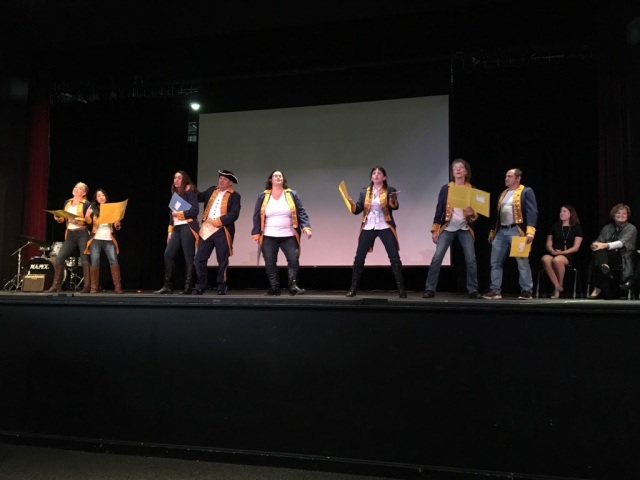Professional learning and development (PL&D)* enhances learning for students. I know this is true. I knew it as a teacher, when a well-designed professional learning experience would cause immediate adjustments to my practice. Or over the long term: I took a course with a facilitator who I had great respect for, and one day she mentioned offhandedly that her school didn’t give out grades. That comment stuck with me, through future course conversations about assessments, rubrics, and grades, and caused me, over time, to truly examine my understanding and beliefs around the purpose of assessment. The end result was a more thoughtful, nuanced way of assessing my students; better practice leading to better outcomes for children.
And OF COURSE I know that professional learning and development enhances learning for students, because my job is that of professional development coordinator for my school district! It has to be making a difference for students, right? Well…I have a secret to admit. While my head knows this to be true, I’ve had a hard time getting my heart on board. I’ve grappled with this since taking the job–sitting in Central Office, spending hours on emails and technical challenges and research, I feel light years away from teaching. How could what I’m doing have any impact on kids? In the classroom, you get the instant gratification of seeing your students through the ups and downs of learning. In my new role, not so much. So here’s where some fantastic teachers come into the story: over the last month, a series of events have reminded me of the enormous impact quality PL&D can have on educator (and student) growth.
First, it was a Friday night event in town where educators shared projects they had developed and implemented for their students. Five educators, three projects, impact on students = immeasurable. To take on this work meant a huge investment of time, energy, and learning on behalf of the educators, and the results were far-reaching: elementary students, middle school students, high school students; science, social studies, engineering, performing arts, foreign language, empathy and connection, leadership, the list goes on. It was clear that PL&D had led directly to positive outcomes for kids, and I was thrilled to see it through these dynamic presentations.
Then, the due date came for educators to propose courses that they want to teach, as part of our summer PL&D program. These due dates always get me (we have one for fall courses, spring courses, and summer), but perhaps because I had been struggling to see the impact of my work, this one was especially meaningful. Educators throughout the district had spent their evenings and weekends doing the reading and research to put together a concept paper and proposed syllabus for a graduate-level course, to facilitate learning among their colleagues, over summer vacation. That is dedication to the craft! Educators within the district are going to share their expertise this summer around the progression of fraction understanding, the impact of executive function on language, and memoir writing, among other topics! Seeing the effort put into these course proposals, as well as the content to be taught, reminds me that our students are in the care of a most capable, professional teaching faculty.
Finally, a thank-you note came in the mail this week. A teacher thanked our office for supporting her to develop and teach a course (her proposal came in back in December, and she taught a course this spring offering strategies for engaging reluctant writers). She said, in the letter, that teaching her colleagues was one of the most valuable experiences of her career. I cried.
So thank you, teachers, not only for what you do every day for our students. Thank you for making it abundantly clear, over and over again (I never said I was the quickest learner!) how professional learning and development opportunities allow you to improve and enrich your practice, and how all of our students and school communities benefit from this critical work. I needed this lesson!
* A note on the phrase “professional learning and development”– in my interpretation, learning new knowledge is not necessarily the same thing as developing as an educator. Yet both professional learning and professional development are critical levers to improving educator practice and outcomes for students. This is why I prefer to talk about PL&D, as encompassing a whole suite of opportunities for growth.







